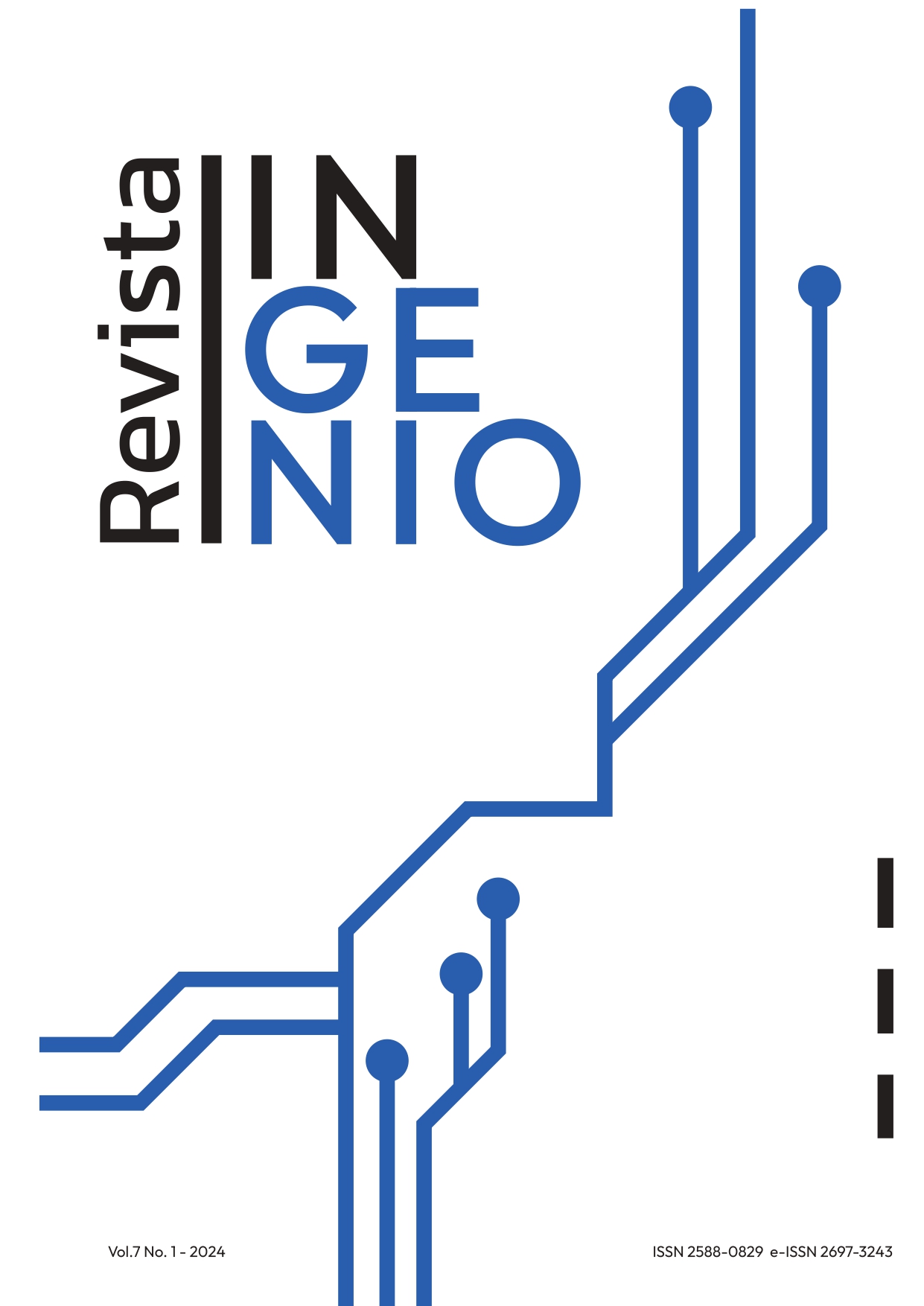Modeling of a Wall and Reaction Slab for Quasi-Static Tests Using the Finite Element Method
Main Article Content
Abstract
To perform quasi-static tests on structural elements, reaction systems comprising slabs and walls are employed. This research aimed to assess the current state of a structure equipped with a reaction system composed of an "L"-shaped slab and wall. Computational programs were utilized for its evaluation, and the mechanical properties of the materials included in the mathematical model were derived from experimental tests. The results obtained indicate that the current capacity of the structure exceeds the demand. Additionally, the maximum load-bearing capacity of the reaction system was determined. Based on the verification of the existing structure, a design proposal is put forth for expanding the reaction wall with a maximum capacity of 490 [kN] and for the CIV infrastructure with an approximate area of 400 [m²]. This will contribute significantly to the advancement of scientific knowledge for the benefit of society.
Downloads
Metrics
Article Details

This work is licensed under a Creative Commons Attribution-NonCommercial-NoDerivatives 4.0 International License.
References
Ugalde, C. G. (2009). Diseño arquitectónico del laboratorio de estructuras y diseño estructural del muro de reacción de la facultad de ingeniería U.A.Q. Querétaro: Universidad Autónoma de Querétaro.
MIDUVI. 2013. Política habitacional y servicios de agua y saneamiento, período 2009-2025.
CITEEC-Udc. (2017). Laboratorio de Construcción. Recuperado de: https://www.udc.es/citeec/construccion.html [Febrero, 2020].
UNAM, I. D. (2021). INSTITUTO DE INGENIERÍA UNAM. Obtenido de Laboratorio de estructuras y materiales: http://www.ii.unam.mx/es-mx/Investigacion/Capacidades-Experimentales/Estructuras-y-Materiales/Paginas/default.aspx
ORIENTACIÓN PROFESIONAL-POSGRADOS Y PREGRADOS. (2020). Escuela Colombiana de Ingeniería Julio Garavito inaugura moderno edificio de laboratorios de estructuras y materiales - Noticias. Recuperado de: https://orientacion.universia.net.co/infodetail/universidades/noticias/escuela-colombiana-de-ingenieria-julio-garavito-inaugura-moderno-edificio-de-laboratorios-de-estructuras-y-materiales-6694.html [Febrero, 2020].
Bernal, J. (2020). Modelos Estructurales. Laboratoriointegrado.uniandes.edu.co. Recuperado de: https://laboratoriointegrado.uniandes.edu.co/index.php/laboratorio-ingenieria-civil/78-laboratorio-ingenieria-civil/77-modelos-estructurales [Febrero, 2020].
EPN, & FICA. (2014). Centro de Investigación de la Vivienda. Recuperado de Facultad de Ingeniería Civil y Ambiental website: https://fica.epn.edu.ec/index.php/centros-de-investigacion/civ
Ruiz, E., & Arias, C. (2019). Modelación por el Método de Elementos Finitos (MEF), mediante el Software Ansys del Elemento Placa. Bogotá, Colombia: Universidad Distrital Francisco José de Caldas.
Álvarez, J. (Mayo de 2020). Análisis Aplicativo del Método de los Elementos Finitos en un Campo Estático-Lineal e Introducción a la no Linealidad. Lima, Perú: Pontificia Universidad Católica del Perú.
Oñate, E. (2009). Structural Analysis with the Finite Element Method-Linear Statics. España: Springer. DOI: https://doi.org/10.1007/978-1-4020-8733-2
Norma Ecuatoriana de la Construcción.b. (Diciembre de 2015). NEC-SE-DS-Peligro Sísmico-Diseño Sismo Resistente. Quito, Ecuador: NEC.
INEN, S. E. (2019). Ladrillos cerámicos. Parte 3: Unidades de mampostería no estructural. Requisitos. Quito: NTE INEN 3049-3.
ASCE. (2017). Seismic Evaluation and Retroit of Existing Buildings (41-17). Washington DC, Estados Unidos: American Society of Civil Engineers.
American Concrete Institute. (2014). Requisitos de Reglamento para el Concreto Estructural (ACI 318S-14) (Vol. 22). Estados Unidos: ACI.
ASTM C39. (2018). Standard Test Method for Compressive Strength of Cylindrical Concrete Specimens. United States: ASTM International.
ASTM C42. (2018). Test Method of Obtaining and Testing Driller Cores and Sawed Beams of Concrete. United States: ASTM International.
ASTM C-805. (2018). Standard Test Method for Rebound Number of Hardened Concrete. United States: ASTM International.
ASTM D2850-15. (2015). Standard Test Method for Unconsolidated-Undrained Triaxial Compression Test on Cohesive Soils. United States: ASTM International.
Alejandro, H. (2014). Módulo de Elasticidad de Hormigones de Peso Normal empleados en el Ecuador f'c: 21, 24, 28, 35 MPa. Quito, Ecuador: Escuela Politécnica Nacional.
ASTM D2216-10, Standard Test Methods for Laboratory Determination of Water (Moisture) Content of Soil and Rock by Mass, ASTM International, West Conshohocken, PA, 2010.
ASTM D6913 / D6913M-17, Standard Test Methods for Particle-Size Distribution (Gradation) of Soils Using Sieve Analysis, ASTM International, West Conshohocken, PA, 2017, www.astm.org.
ASTM D4318-17e1, Standard Test Methods for Liquid Limit, Plastic Limit, and Plasticity Index of Soils, ASTM International, West Conshohocken, PA, 2017, www.astm.org.
ASTM D2166 / D2166M-16, Standard Test Method for Unconfined Compressive Strength of Cohesive Soil, ASTM International, West Conshohocken, PA, 2016, www.astm.org.
Bowles, J. (1996). Foundation Analysis and Design. New York: McGraw-Hill.
Grijalva, L., & Narváez H. (2018). Elaboración de Curvas de Fragilidad para Ensayos Experimentales realizados sobre Mamposterías de Bloques de Concreto y Ladrillos en Quito. Quito, Ecuador: Escuela Politécnica Nacional.
Durán Bolaños, M. (2018). Calibración de modelos estructurales y estudio del comportamiento dinámico para puentes de vigas de acero compuestas y continuas de 3 tramos. Costa Rica: Universidad de Costa Rica.
Godfrey Montero, R. (2018). Identificación de modos de torsión de tres edificios de concreto reforzado empleando la medición de vibraciones ambientales y el análisis espectral. Costa Rica: Universidad de Costa Rica.





